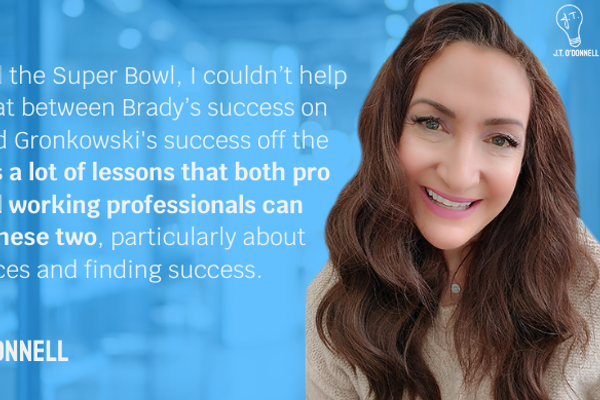Class Of 2010: Boomerang Kids Are Unemployed, Hitting The Couch & Becoming K.I.P.P.E.R.S
June 01, 2010

 By CAREEREALISM Founder, J.T. O'Donnell
3.2M students graduated from college this spring, but less than 25% of them had job offers. So, what happens to all the rest?
They go back home.
Referred to as 'boomerang kids' for their return to their parent's abode after graduation, this summer, a large percentage of 20'somethings will find themselves on the couch becoming K.I.P.P.E.R.S. (Kids In Parents Pockets Eating Retirement Savings). It's no wonder why so many parents are over-stepping their bounds in an effort to get their children jobs. However, continuing to micro-manage a student's life after college:
A) Won't help them learn how to take care of themselves.
B) Doesn't do much for their self-esteem.
Which means, parents need to stop hovering and start pointing their child towards resources that will teach their child how to find a job on their own.
Two Current Options for Job Seeking Grads
One option is their college career center. But, if the school isn't local, they may find this resource a dead end. Another option is to invest in private career coaching - a great service, if you can afford it.
Now, Here's a Third...
At CAREEREALISM.com, we just launched the 2.o version of our 24/7 Career Center, called CAREEREALISM Club. Staffed with approved career experts who work with members in real-time, the program provides job seekers with an unprecedented amount of cutting-edge career tools and job search support. As a top 10 career advice site, we knew we needed to create a 'Career HMO' for job seekers. This tool has the capacity to cut a job seeker's search time in half by providing the type of inspiration, education and connection needed to land a job in today's economy.
Plus, Exclusive Access to Our Talent Promotion Program
To celebrate it's launch, we are discounting 100 memberships for recent college grads to join our CAREEREALISM Club. Besides access to our tools and resources, we offer a program called CAREEREALISM University. Recent grads who join and complete CAREEREALISM University can earn a certification that shows employers their readiness for work. Better still, when they complete the certification, they get invited to join an exclusive group on LinkedIn (the #1 career social network) where we will help them connect with potential employers. In short, it's the chance for a recent grad to learn the vital life skills of job search, earning them a job in the process.
Our Desire for WOMP = Special Deal for Grads
By CAREEREALISM Founder, J.T. O'Donnell
3.2M students graduated from college this spring, but less than 25% of them had job offers. So, what happens to all the rest?
They go back home.
Referred to as 'boomerang kids' for their return to their parent's abode after graduation, this summer, a large percentage of 20'somethings will find themselves on the couch becoming K.I.P.P.E.R.S. (Kids In Parents Pockets Eating Retirement Savings). It's no wonder why so many parents are over-stepping their bounds in an effort to get their children jobs. However, continuing to micro-manage a student's life after college:
A) Won't help them learn how to take care of themselves.
B) Doesn't do much for their self-esteem.
Which means, parents need to stop hovering and start pointing their child towards resources that will teach their child how to find a job on their own.
Two Current Options for Job Seeking Grads
One option is their college career center. But, if the school isn't local, they may find this resource a dead end. Another option is to invest in private career coaching - a great service, if you can afford it.
Now, Here's a Third...
At CAREEREALISM.com, we just launched the 2.o version of our 24/7 Career Center, called CAREEREALISM Club. Staffed with approved career experts who work with members in real-time, the program provides job seekers with an unprecedented amount of cutting-edge career tools and job search support. As a top 10 career advice site, we knew we needed to create a 'Career HMO' for job seekers. This tool has the capacity to cut a job seeker's search time in half by providing the type of inspiration, education and connection needed to land a job in today's economy.
Plus, Exclusive Access to Our Talent Promotion Program
To celebrate it's launch, we are discounting 100 memberships for recent college grads to join our CAREEREALISM Club. Besides access to our tools and resources, we offer a program called CAREEREALISM University. Recent grads who join and complete CAREEREALISM University can earn a certification that shows employers their readiness for work. Better still, when they complete the certification, they get invited to join an exclusive group on LinkedIn (the #1 career social network) where we will help them connect with potential employers. In short, it's the chance for a recent grad to learn the vital life skills of job search, earning them a job in the process.
Our Desire for WOMP = Special Deal for Grads The first 100 students who join here can do so for a one-time fee of $39. (The normal cost is $75/year.) Why are we doing this? Because we want to be able to show how powerful our program is. Instead of wasting money on advertising, we think it's smarter to offer this discount to a small group of eager job seekers as a way to create WOMP (Word Of Mouth Potential) for our innovative program.
If you know a college student who would benefit from this service, please send them the link. We can only afford to offer this price to the first 100 students who apply. We will shut down the link when we have reached that number, at which point, they can still join, but at the $75/year rate.
And, if you have any questions about the program, they can be e-mailed to us at club@workitdaily.com.
The first 100 students who join here can do so for a one-time fee of $39. (The normal cost is $75/year.) Why are we doing this? Because we want to be able to show how powerful our program is. Instead of wasting money on advertising, we think it's smarter to offer this discount to a small group of eager job seekers as a way to create WOMP (Word Of Mouth Potential) for our innovative program.
If you know a college student who would benefit from this service, please send them the link. We can only afford to offer this price to the first 100 students who apply. We will shut down the link when we have reached that number, at which point, they can still join, but at the $75/year rate.
And, if you have any questions about the program, they can be e-mailed to us at club@workitdaily.com.








